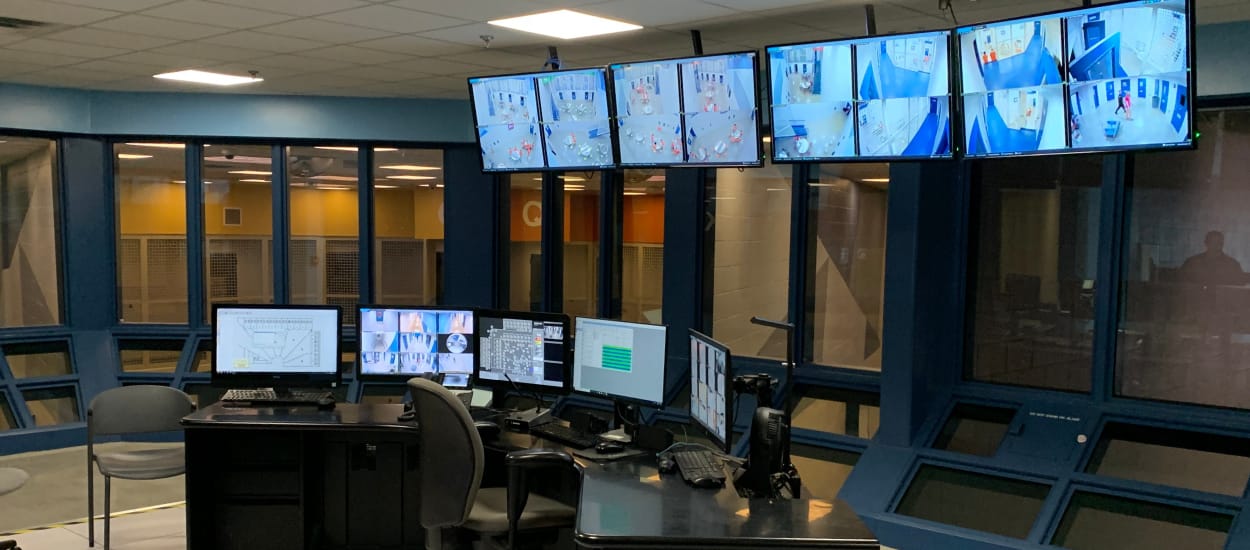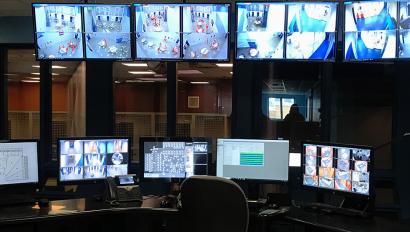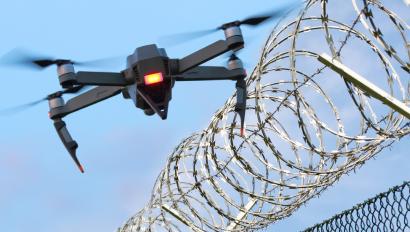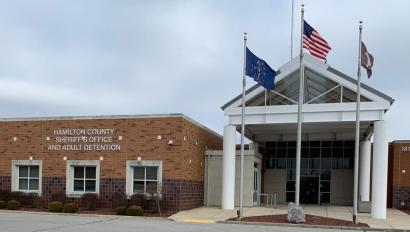How to Select the Best Security Cameras for Your Correctional Facility

Over the last decade, we’ve seen a significant increase in the number and types of security cameras available to correctional institutions. As a result, it’s become more complicated for facilities to select the correct model for the correct application, but this blog should help.
To select the best camera models to meet your correctional security surveillance requirements, you’ll need to consider five factors:
- Durability
- Resolution
- Camera type
- Field of view
- Compatibility
Let’s first dive deeper into the overall durability of a camera to better understand what’s needed in a correctional setting.
IP and IK Ratings for Correctional Security Cameras
The overall durability of a camera needs to be considered based upon where the camera will be installed and what environmental conditions it may encounter.
Most camera manufacturers will publish ratings of each camera model based on International Electrotechnical Commission (IEC) standards for dust and moisture ingress, as well as mechanical impact protection. These ratings are listed on each camera model as an IP and IK rating, respectively.
There are many levels of ratings, but only a few apply to camera selection for use in a correctional setting. Any areas that may be subject to water, moisture or spray should be IP66. These guidelines apply to exterior cameras, as well as areas that may experience water or spray from cleaning or abuse inside your facility. Indoor office and administrative areas not subject to moisture can use an IP52-rated camera.
The vandal or impact rating of a camera also needs to be selected based on where the camera will be installed. Within the detention spaces, and when the camera is installed at an accessible height, an IK10-rated camera should be used. Within the rest of the facility, or in areas where the installation height is not accessible, an IK08-rated camera will be a durable camera choice.
Best Security Camera Types for Correctional Facilities
Fixed Dome – The fixed dome camera is the most common camera used today. They are available in all the necessary IP/IK combinations and in many different resolutions. Fixed dome cameras are commonly available in resolutions from 720p to 4k video. The correct camera resolution will depend on the level of clarity need, field of view and distance.
Pan-Tilt-Zoom (PTZ) – PTZ cameras can be used both indoors and outdoors. This type of camera can be used to zoom in and get a very detailed image from a distance. Visiting areas and exterior fence protection are two of the most common uses for PTZ cameras today.
Panoramic – 180-degree and 360-degree cameras can be very useful to eliminate blind spots and cover areas with fewer cameras. For example, a single 360-degree camera could be placed in the center of the room and provide adequate coverage. Resolutions for panoramic cameras must be carefully considered to ensure the clarity of the final image will meet your surveillance goals.
Multidirectional – Cameras with multiple independent sensors are useful in covering corners of buildings, hallway intersections and other oddly shaped spaces. The number of sensors can vary between two to four, and can be aimed separately to focus on the specific areas of interest. Multidirectional cameras also have an installation cost savings, since you can add multiple cameras in an area with a single cable.
Body Worn – The newest camera type for use inside correctional facilities is the body worn camera. These cameras can be added to your existing fixed camera system to provide additional views of areas or events. Body worn cameras can provide a new perspective, as well as audio of the events. The recording of these cameras can be triggered automatically using onboard sensors or manually by pressing the record button. These cameras are built ruggedly to withstand drops and the normal use of correctional officers within your location.
Corner Mount – Anti-ligature or no-grip cameras mounted in the corner can safely provide full coverage of a small space. These specially designed cameras are useful in cell or holding areas where full coverage – including directly under the camera – is desired. Many of the available camera models have one-way and two-way audio versions available.
Additional Considerations for Security Cameras
Audio – Microphones and audio recording can be added to most cameras today. Common areas where audio recording is added are intake areas, crisis cells, visiting areas and dayrooms.
Analytics – The use of smart cameras and analytics can be beneficial to correctional facilities to help alert staff to specific events. Motion events, line crossed for perimeter protection, and audio threshold alarms are some of the most common analytics used in cameras today. These analytics also can be used to reduce the time it takes to investigate a video incident by adding certain parameters to locate the relevant video.
Integrations – Cameras and video systems are commonly integrated with your PLC-based door control system and intercom systems. This level of integration can increase the safety of your facility and can improve the efficiency of your staff. Integrations with perimeter radar systems and drone detection systems are also available to protect your facility and provide more information about what is happening.
The number of different camera models available to correctional facilities can be overwhelming, but setting goals on what you need and want to see is the first step in selecting the correct camera types. There are many tools available to help you choose and calculate which resolutions are best for each area.
Disclaimer: By using the Blog section of this website (“Blog”), you agree to the terms of this Disclaimer, including but not limited to the terms of use and our privacy policy. The information provided on this Blog is for information purposes only. Such information is not intended to provide advice on your specific security needs nor to provide legal advice. If you would like to speak to a Security representative about your specific security needs, please contact us.
























